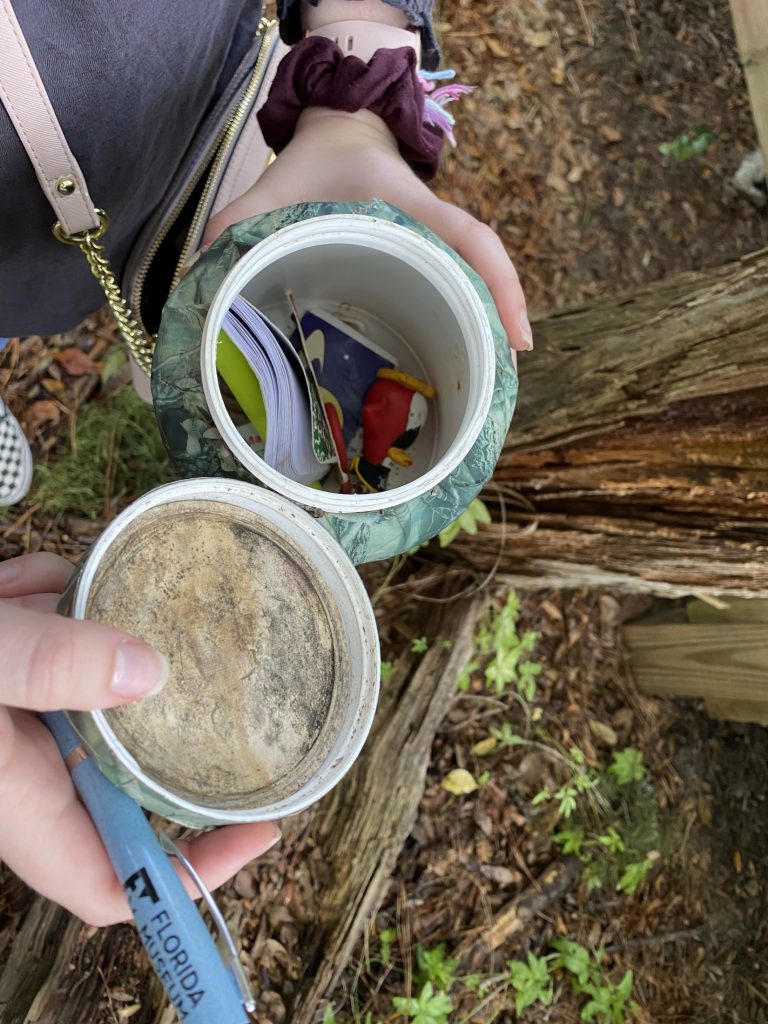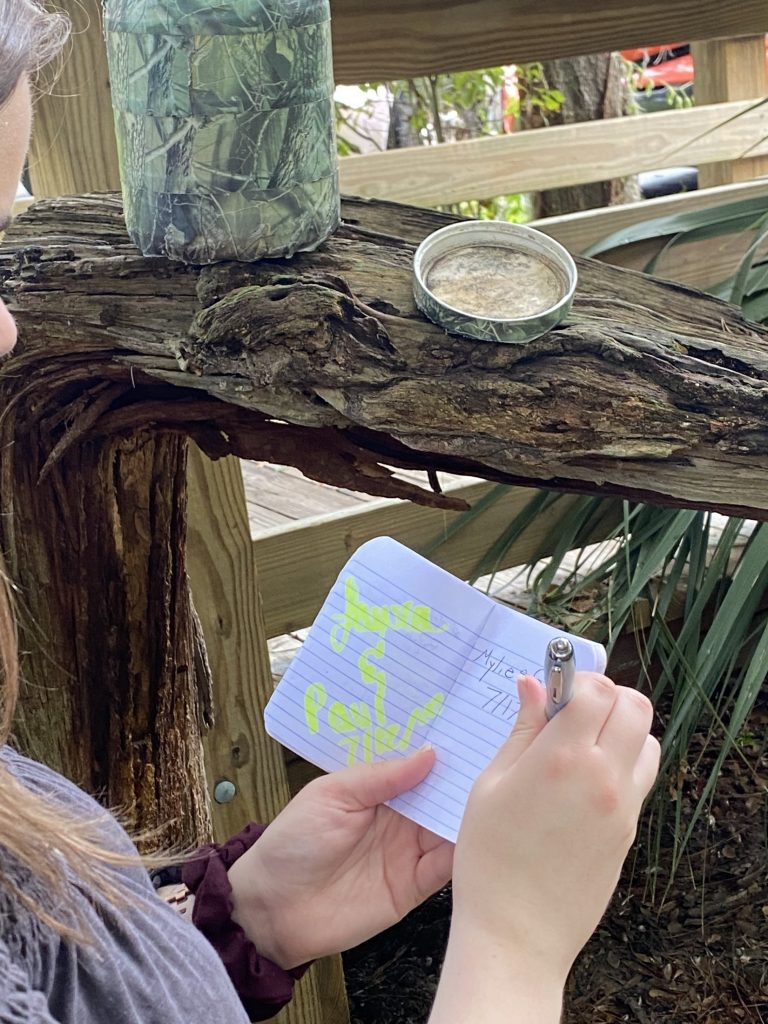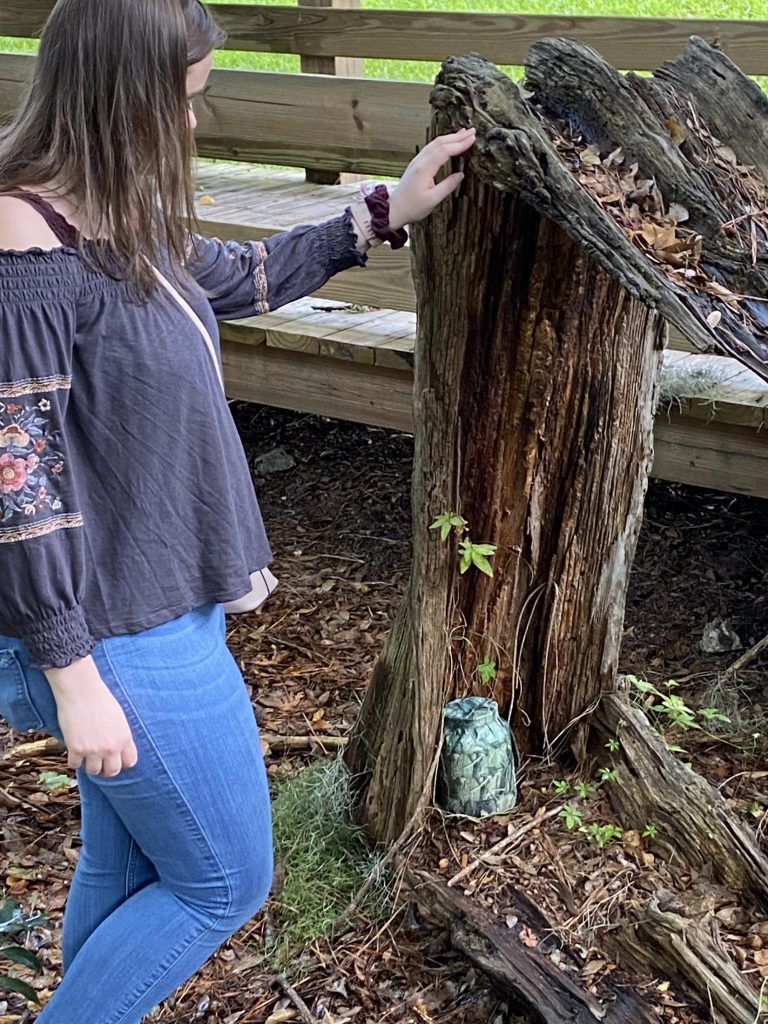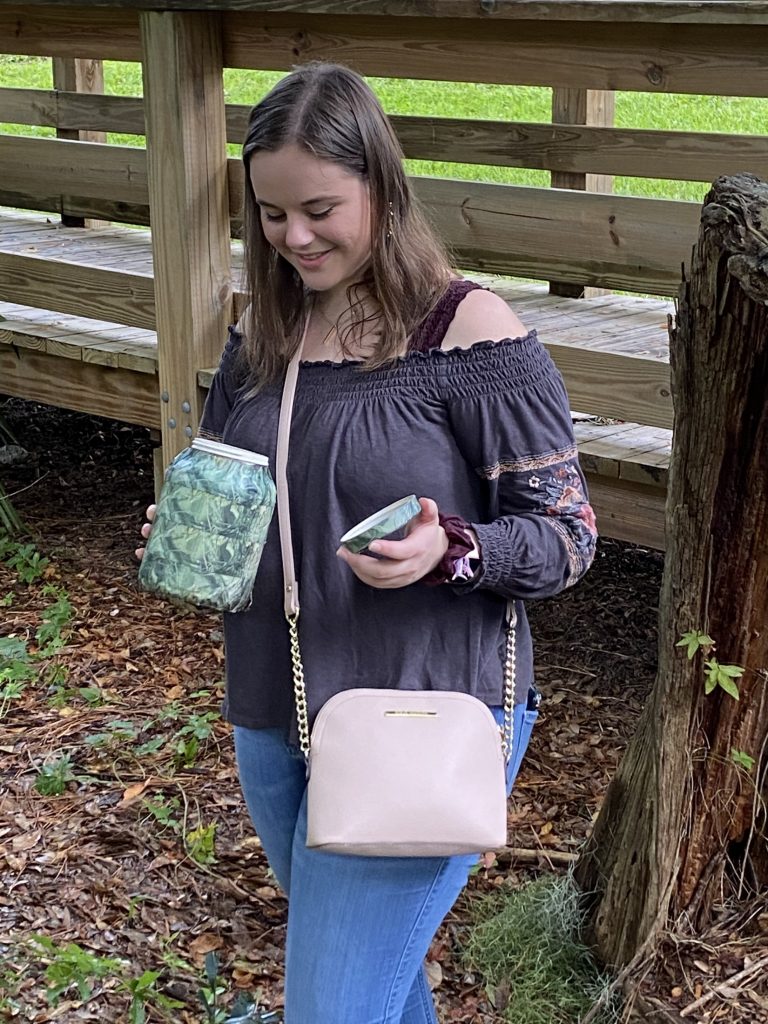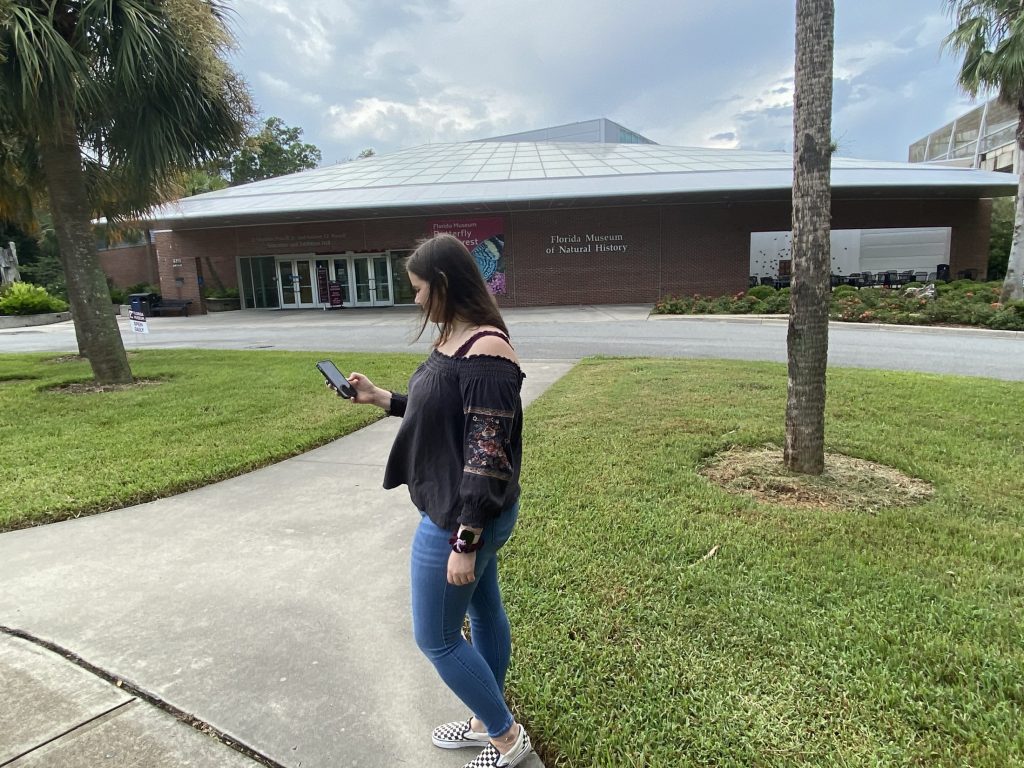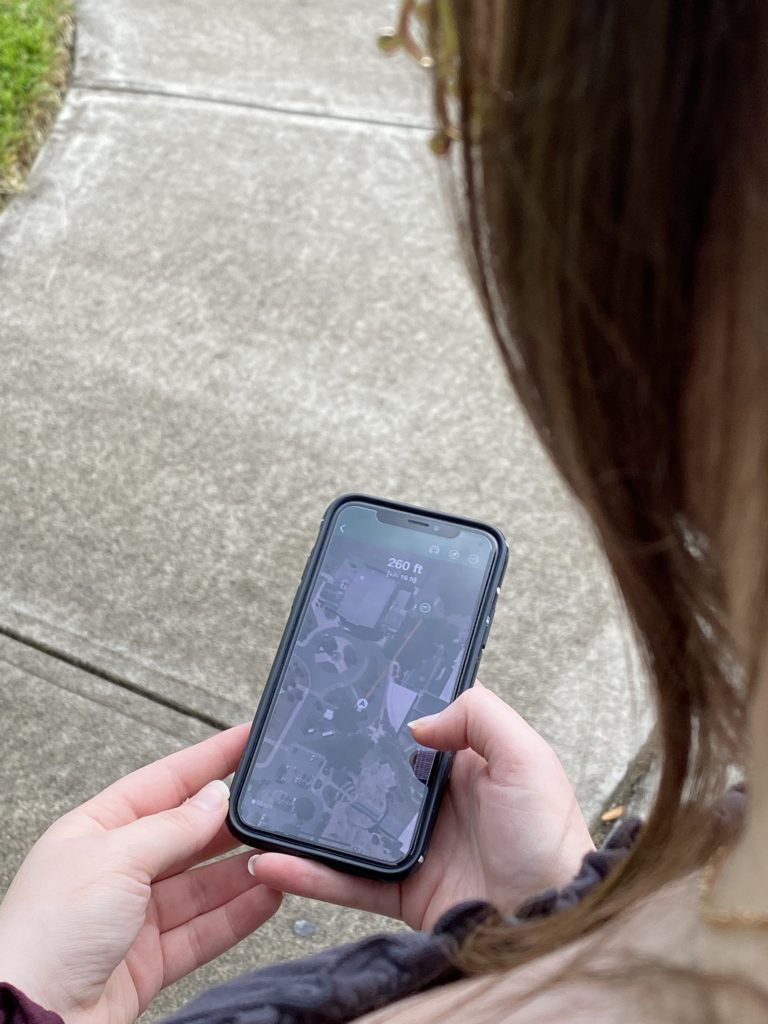As children, many of us grow up listening to fantastical stories about pirates sailing the seas, exploring islands, and following maps to big red X’s that mark the spot for buried treasure.
My little brother and I would play pirates in our backyard as we ventured past the vast tomato garden and around the towering swing set to dig up rare finds (nickels and pennies) out of the treacherous sandbox. While I may no longer put on my silly hat or pull out my plastic telescope, such treasure hunts in the real world are just as achievable as they were in my youth.
Geocaching is a lively activity where adventurers of all ages can use GPS systems to track down hidden treasure –caches– all around the world. These caches can range in size from a minute capsule holding only a paper scroll to a large canister filled with unique trinkets and a logbook. It is important to bring a pen and bag of small trinkets from home on one’s journey because once the caches are discovered, finders get to add their names to the log of previous explorers as well as a trade out their own trinkets for any interesting ones in the container. The first geocache I had ever found with a group of my friends was a large canteen wrapped in camouflage tape hidden among the trees lining a park we frequented. Upon finding it, we each logged our names in its folded logbook, and I traded a 1-euro coin from France for a cute dog figurine. We soon learned the park had six other geocaches that we hunted down that day.
Though earning a prize through finding a cache is an enticing reason to venture out to treasure hunt, we all know that sometimes the journey is just as exciting as the destination. In order to begin the experience, the Geocaching app can be downloaded on most GPS devices, such as a smartphone. Users can create a free account to reveal what geocaches are nearby. There is a fee to unlock premium features such as multi-caches, Earthcaches, virtual caches, and other specialty locations, but if anyone is like me and wants to check all the experiences off their list, purchasing Premium might be worth it. Regardless of which route one takes, they can get started by choosing a cache available to them.
The chosen cache should pop up with information about how challenging the find is, how large the container is, a note from its owner, and other helpful information. There should be a car icon that allows users to find the route to the cache, so by clicking it, the journey begins. Searchers can drive, bike, or walk to the GPS’s destination, parking vehicles in the appropriate location. Now within walking distance, treasure-hunters should click “Navigate” to be directed to a location within about 200 feet of the cache itself. This is where it’s time to get hands dirty!
The immediate location should be respectfully searched for a capsule the approximate size designated by the app. Remember to look up down and all around for likely camouflaged containers! The caches will not be buried, but they may be concealed under loose rocks or other natural barriers. Finally, X marks the spot! Treasure should be found, rewarding seekers for their hard work. Always make sure to return caches exactly as they were found, so the next explorers get to enjoy the same experience.
The University of Florida campus is home to a plethora of geocaches of all levels and types. On my most recent trip to Gainesville, after spending some time exploring the Florida Museum, my little brother and I spent the rest of our afternoon hunting for geocaches. While there were a few caches hidden so well that they stumped us into moving on to the next one, we were able to find several around campus. After logging our names and looking through the contents inside them, we were able to check off our found caches on the app, turning the green box icon into a little smiley face.
The Florida Museum of Natural History itself has three geocaches located closely on its outside. In addition, it even has two Earthcaches that can be unlocked with Premium. My brother and I made sure to hunt for these treasures. My favorite of these finds was a traditional geocache, which had a logbook, some cards, and two marbles hidden inside. I traded in a penguin keychain for the white marble to keep a memento of this occasion. While finding treasure made for a great afternoon, spending the day outdoors with my little brother and making memories that will last a lifetime was the real reward. I’m looking forward to our future swashbuckling pirate adventures!
This guest post by an intern originally appeared in Wonder & Grow, a blog by Chelsea Collison, one of our former Museum educators.
